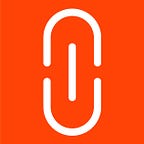Rethinking Design challenge to equip cities with modern furniture— Evolutionise Design Challenge by UNI
REINVIGORATING PUBLIC SPACES
Cities and their history tell us a lot about how humans react to certain stimuli and how social constructs evolved along with time and experience. In different parts of the world, society works differently but also similarly in ways. But to develop a certain algorithm to suit one context, one would have to study the place in particular.
The current state of evolution of any city is stuck to one benchmark that is set by the developed countries. While having this as a goal is a plus point, completely adopting their methods into every context has led to stagnation in evolution. It is in terms of gentrifying the world’s diversity and today’s world is slowly reaching a saturation point in those terms, especially cities and urbanities.
The human brain requires constant alterity in its stimuli or it tends to slowly deteriorate like any atrophied muscle. To provide this dynamic change, on a larger scale, public spaces that people use every day can be the bull’s eye as they act as a major part of a majority percentile of humans.
How can public avenues be made more interesting?
REDESIGN URBAN FURNITURE
Evolutionism is a step forward that seeks to bind the concept of urban identity and the furniture that speaks for the city. It aims at creating elements that connect the dots to reveal the underlying identity of a city.
The competition brief calls for the design of a family of furniture for the desired city, with common features in concept/form/color/design that are derived from the city under consideration.
The competition aims to come up with unique designs of furniture that are futuristic and modern, yet contextual and accessible. The infusion of technology into the realms of furniture design is not a new feat, but making furniture for a public space to suit a variety of people needs to be revolutionized.
The location of these pieces of furniture also matters, by analyzing key spots where they could be meaningful to the city as well. The furniture must cater to the needs of the local demography by studying their patterns and activities. The public furniture must be durable, sleek, and replicable in multiple spots if need be.
OBJECTIVES
The furniture pieces created, can be chosen from a broad category of street furniture categories given below These can be chosen by preferences of the designer or affinity/use/compatibility of furniture to the city.
Participants have to design any 4 different furniture pieces in the following typology. They can be combinable, but they should be useful/meaningful in isolation as well.
Typology A is mandatory, and the other 3 can be chosen separately. Furniture that fits more than a single typology will be placed in the I. Hybrid category.
There is no additional merit associated with the kind of choice of the categories but the design input of the participant and its merging or combination. You can use hybrid categories that may solve crucial spots of the city and at the same time define its image at large.
GOALS
The key qualities expected in the furniture pieces are:
- Lively: Should be open/accessible for people to be a part of with fun/fresh/digital mediums to engage.
- Modularity: Design modular furniture that is industrially replicable and inclusive.
- Robust: Develop a furniture piece that can withstand years of use in the public realm.
- Engage: Should be a vibrant part of the streetscape and be able to connect to a wide age group.
SITE
New York City is a populous metropolitan that has a population of more than 20 million residents. The society is multicultural with people coming to the city from all over the world. The streets are overwhelmed with skyscrapers, commercial establishments for food, clothing, and so on, which attracts a huge footfall of pedestrians around the city. Public transport is an important part of the infrastructure of the city.
The site for this challenge is Brooklyn, New York City. The neighborhood is a hub of cultural activity, art, and design. There are many cultural venues and local businesses that contribute to the economy of the city.
The sidewalks are overwhelmed with pedestrians and trade pop-ups. The selected site must provide various opportunities such as traffic lights, bus stops, street lights, and empty spaces for other creations.
Find all the competition brief, terms, and other registration guidelines on this
page: Evolutionise | Product Design Competition on UNI | About
Follow us on social media: Facebook| Instagram| LinkedIn| Twitter| Youtube
Originally published at https://uni.xyz.
